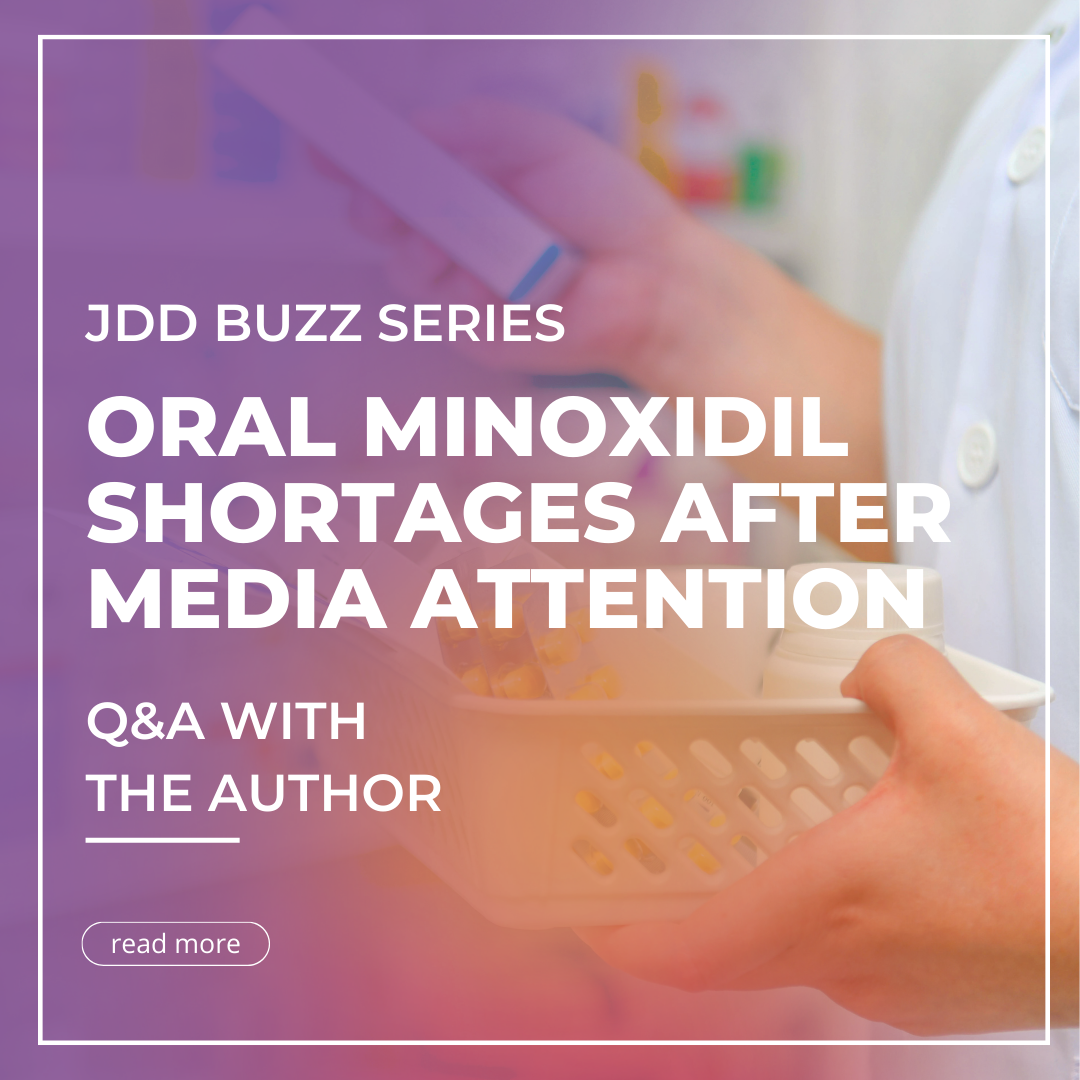Media attention about oral minoxidil has impacted access to the hair loss drug in the Washington, D.C. area, according to a study published in the January issue of the Journal of Drugs in Dermatology. Researchers found shortages of the drug in D.C.-area pharmacies more than a year after an article about the treatment appeared in The New York Times.
To find out more about oral minoxidil access, I interviewed lead author Sapna Desai, MD, a dermatology research fellow with the GW School of Medicine & Health Sciences Department of Dermatology.
What led you to want to investigate patient access to oral minoxidil in the greater Washington, DC area?
The New York Times article, “An Old Medicine Remedies Hair Loss for Pennies a Day,” published on August 18, 2022, led to a now documented and continuous surge in public and patient interest in oral minoxidil for the management of hair loss. However, more recently at GW we received feedback from several patients that they were unable to fill their prescriptions due to reported shortages at their respective pharmacies. This pattern was being witnessed by colleagues at other institutions and therefore we wanted to dive deeper to hopefully quantify the extent of this shortage.
How did you conduct the study and what were your key findings?
We selected four retail chain pharmacies (CVS, Giant, Walgreens, & Harris Teeter) with even distribution among suburban, urban and rural towns in the D.C., Maryland, Virginia (DMV) areas. During the first week of October 2023, we called 277 pharmacies using a standardized script to assess the availability and quantity of oral minoxidil in stock both for 2.5mg tablets and 10mg tablets. Only 40% of those pharmacies could immediately fill 30-day prescriptions for the 2.5mg dose. Similarly, the available volume of 10mg tablets was limited, with only 32.2% of Northern Virginia pharmacies confirming sufficient supplies for a 30-day prescription fill, followed by 26.8% of Washington, D.C. pharmacies, and 22.3% of Maryland pharmacies.
Did the results affirm your hypothesis or surprise you?
Although we anticipated some shortages of oral minoxidil given its increased utilization off label, the results were surprising and revealed a significant care gap within the DMV, which could potentially translate to a national level.
What did the media attention on the off-label use of oral minoxidil reveal about how easily medication access may be compromised? What needs to change to ensure medication access for the patients who need it?
Media platforms strongly influence patient interests and care seeking behaviors and resulting practice trends.1,2 Such patterns, as seen with off-label use of oral minoxidil, could potentially compromise access to said medication if industry and the market do not respond appropriately. The medication supply in this country for both elective and medically necessary medications is a major issue and shortages of oral minoxidil is just one example. It is important that regulators, policymakers and companies in the healthcare industry prioritize improving greater transparency in the national drug supply chain by notifying the public of forthcoming drug shortages and addressing the shortages in a timely manner.
What are some takeaways from this study? What should dermatologists – and the medical community at large – consider in light of this study?
This study underscores the importance of disseminating information regarding potential drug shortages and determining the best allocation of resources when this occurs. Given that androgenetic alopecia is a chronic condition and abrupt cessation of therapy can have detrimental effects on treatment course, it would be useful to have clinical guidelines on how to approach such scenarios to limit patient impact. Preparing and educating patients on what might happen if they stop taking minoxidil can help mitigate the psychological and emotional effects of a drug shortage.3 Another approach could be to encourage patients to take daily minoxidil at lower but still effective doses (0.625mg -to- 5mg) to efficiently utilize the drug supply while preventing hair miniaturization following drug cessation. Most importantly, we should all advocate for drug manufacturers to have strong communication and transparency among all stakeholders, requiring adequate and advanced reporting systems to disclose any drug shortages.
Do you plan to conduct any additional studies based on these results?
There are no plans to conduct any additional studies based on these results. We are hopeful that supplies of oral minoxidil will resume to full stock within the upcoming weeks.
References
-
- Ghahramani F., Wang J. Impact of smartphones on quality of life: A health information behavior perspective. Inf. Syst. Front. 2020;22:1275–1290. doi: 10.1007/s10796-019-09931-z.
- Lambert S.D., Loiselle C.G. Health information—Seeking behavior. Qual. Health Res. 2007;17:1006–1019. doi: 10.1177/1049732307305199
- Kenny, S. A dermatologist affected by minoxidil shortages shares 3 ways hair loss patients can access the drug. Business Insider. November 2023. https://www.businessinsider.com/minoxidil-hair-loss-drug-shortage-access-dermatologist-2023-11
Did you enjoy this JDD Author Buzz? You can find more here.

